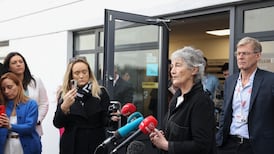More than a quarter of the population is involved in some form of volunteering, new figures show.
The value of volunteering work - if the minimum wage is applied to unpaid and non-compulsory hours - amounts to more than €2 billion annually, or 232 million hours annually.
The question on volunteering formed part of the CSO’s quarterly national household survey in the three months from July to September 2013.
While many voluntary groups reported a decline in numbers during the economic boom - linked to issues such as commuting and pressure of work - these latest figures suggest a large proportion of the population (28 per cent) is contributing to the community.
When the number is broken down by age group, they show most volunteering was carried out by middle-aged or older people, while those aged under 25 gave the least amount of hours.
Patterns differ
Men and women were both as likely to volunteer, though patterns differed.
For example, men were more likely to give their time through a sporting, charity or religious organisation, while women were slightly more likely to be directly involved in volunteering.
Women working in the caring and leisure sectors accounted for most females involved in voluntary work.
Among men, the most common occupation was categorised as associate professional and technical.
Of those who did give their time, they appeared to feel better about themselves and their lives.
Volunteers, for instance, were more likely to rate their lives as highly or very highly worthwhile (83 per cent) compared to those who did not volunteer (76 per cent).
Employment did not appear to be a barrier towards people giving their time.
In fact, almost a third of people at work volunteered and nearly half of all hours given were provided by employed persons.
Those who were unemployed - who account for about 10 per cent of the population when the survey was conducted - provided 8 per cent of all volunteer hours.
Relationship status
When broken down by relationship status, there were some significant differences recorded.
Those classified as single were less likely to volunteer their time. While they accounted for 40 per cent of the population, they represented just 29 per cent of volunteering hours.
By contrast, those who were married accounted for a third of the population but contributed to more than half of all volunteer hours.
Overall, there was an almost even split between those whose volunteering was for organisations (45 per cent) and those who volunteered directly (48 per cent). The remainder volunteered for both.
There were also also regional differences. In the Dublin region, for example, almost three quarters of time volunteered was with non-profit groups, including charity, sports and religious organisations. In the west, by contrast, just over half was through these kinds of organisations.
Nationally, few people volunteered hours to business organisations (2 per cent) or to government organisations (4 per cent).
Other organisations, including community groups, gained three in every 10 hours volunteered through organisations.
There were also big differences in the number of hours given to volunteer work.
More than four in 10 people who volunteered worked up to 100 hours a year. For the older age groups, this tended to increase. In fact, almost one in 10 of those aged 55-64 volunteered over 700 hours a year.










